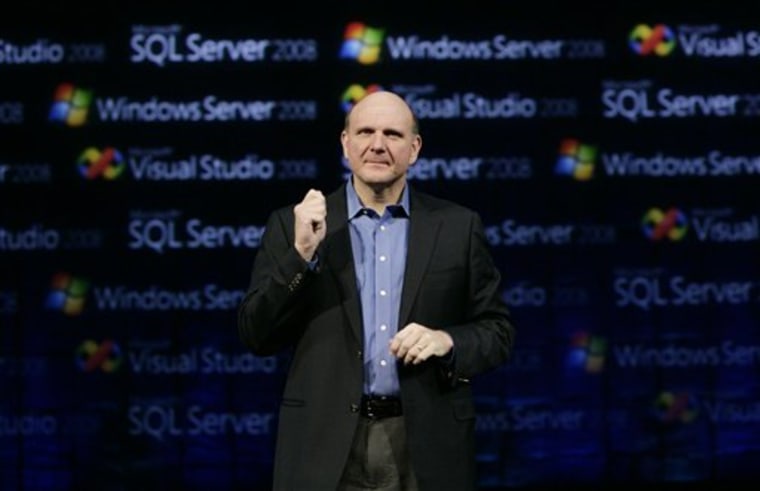Microsoft Corp. launched a new version of its server operating system with great fanfare Wednesday, but analysts said Windows Server 2008 is an incremental update rather than a giant leap forward.
At a Los Angeles event that opened with a speech by former news anchor Tom Brokaw, Microsoft also unveiled a new edition of Visual Studio 2008, used by computer programmers to create desktop and Web applications. The event also promoted a third program, Microsoft's SQL Server 2008 database system, which won't be available until the third quarter of this year.
(Msnbc.com is a Microsoft-NBC Universal joint venture.)
The three franchises are part of Microsoft's lucrative server and tools division, which brought in $3.28 billion in revenue in the three months ended Dec. 31, 2007 — a fifth of the company's total revenue in the period.
Notably absent from the server launch was a final version of "Hyper-V," a software layer that allows IT people to turn a single server computer into many virtual machines. While a beta version is available, Microsoft has said that component won't be complete for another six months, even as Chief Executive Steve Ballmer touted virtualization as one of the key trends addressed by Microsoft's new generation of programs.
"There are a ton of really interesting features, but really no single feature that says, 'I gotta have it,'" said Gartner analyst John Enck in an interview about Windows Server 2008.
"The only thing we're really negative on is the late hypervisor," he said, referring to the virtualization technology.
Enck and other analysts pointed to new features that make the new version of server software easier for IT people to manage their companies' armies of laptop and desktop PCs and data center servers.
It also added features analysts expect will appeal to people who chose open-source Linux or Unix-based servers in the past.
For example, IT people can now pick and choose different server components based on what kind of job they want a single machine to perform, reducing costs and improving security by giving hackers fewer places to attack. Microsoft also added a command-line interface familiar to open-source aficionados, as well as better support for popular free applications like the Apache Web server.
"Microsoft, for the last five to 10 years, has been slowly adding capabilities that have been the domain of other operating systems," said James Staten, an analyst for Forrester Research. "They're doing it again."
Microsoft said adoption of Windows Server 2008 is pinned to the rate at which companies replace old servers with new ones, and that the missing virtualization technology won't affect how quickly companies make the switch.
Enck, the Gartner analyst, argued that the late Hyper-V could slow adoption, as could the strength and stability of its predecessor, the "R2" update to Windows Server 2003 that the company will support through 2014.
